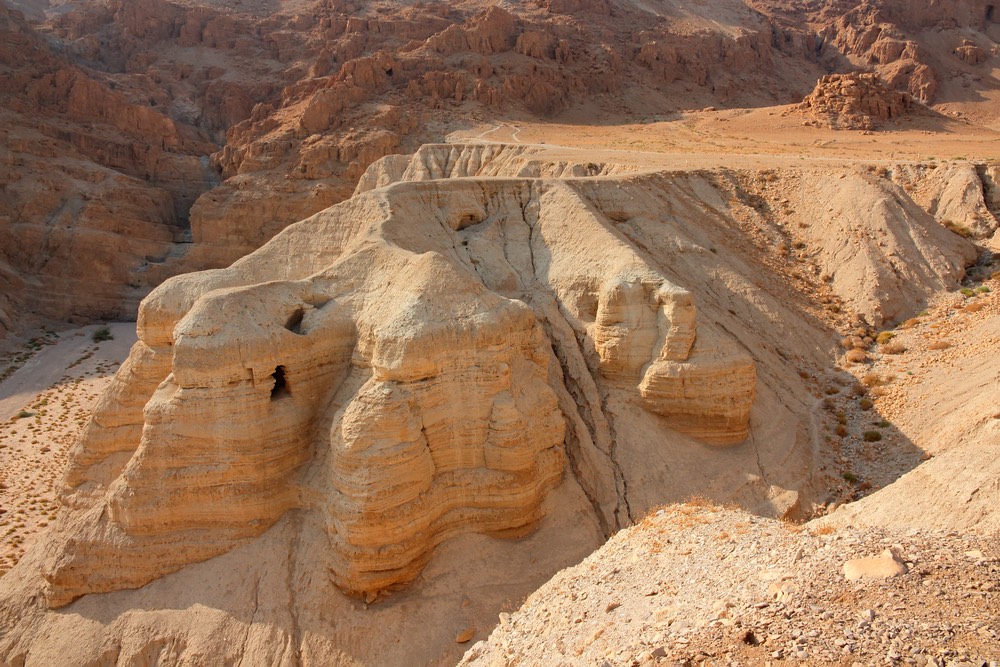Are These New Dead Sea Scrolls the Real Thing?

The Dead Sea Scrolls are about 2,000 years old and hold text from the Hebrew Bible. Hundreds of fragments of the scrolls were first found between 1947 and 1956 in caves in Qumran in the Judean Desert.
More recently, additional scroll fragments have come to light. Since 2002, around 70 Dead Sea Scrolls fragments have appeared on the antiquities market, said Eibert Tigchelaar, a professor at the University of Leuven in Belgium, in an interview with Live Science.
Tigchelaar believes that some of the scroll fragments that have recently appeared are actually modern-day forgeries, while others are not from Qumran, but rather other caves in the Judean Desert, possibly ones that haven't been discovered by archaeologists.
"I think what we have here is a mix of material that is authentic and of material that are forgeries," Tigchelaar told Live Science.
One of his arguments supporting the forgery claim is that of the 70 fragments that have appeared only one or two seem to be part of the 900 manuscripts found in the Qumran caves. To have so many scroll fragments that are not part of the other manuscripts found at Qumran is "statistically impossible," Tigchelaar said. [25 New 'Dead Sea Scrolls' Revealed]
Additionally, Tigchelaar has found that most of the 70 new scroll fragments are from books of the Hebrew Bible, whereas the manuscripts found at Qumran contain a wider mix of texts, including calendars, community rules and apocryphal (noncanonical) texts.
Some of the new scroll fragments also contain oddities in their writing, such as small letters that appear to be crammed in at the edge of fragments (a fragment is supposed to be part of a manuscript that fell apart), Tigchelaar and other scholars have found.
Sign up for the Live Science daily newsletter now
Get the world’s most fascinating discoveries delivered straight to your inbox.
Some of the scrolls may be authentic but not from Qumran, Tigchelaar said noting that the sellers could claim the scrolls were found in Qumran in order to boost the sales price or to avoid legal problems related to provenance.
After Israel took over the West Bank in 1967, laws were enacted that prohibited the selling of newly discovered scrolls. "If they [the new scroll fragments] were found after 1967, they [collectors and dealers] would not be allowed to own them or to sell them, but they would have to give them to the Israel Antiquities Authority," Tigchelaar said. He said that a close examination of the provenance of the new scroll fragments is needed. [See Photos of the Dead Sea Scrolls Fragments]
Search for more Scrolls
More undiscovered scrolls are likely hidden in the Judean Desert, the Israel Antiquities Authority (IAA) said, adding that looters are probably already finding them. Last year, the antiquities authority launched a series of surveys and excavations in the Judean desert to try to find caves that may contain undiscovered scrolls.
"For years now our most important heritage and cultural assets have been excavated illicitly and plundered in the Judean Desert caves for reasons of greed," Miri Regev, Israel's Minister of Culture and Sports, said in a statement. "The goal of the national plan that we are advancing is to excavate and find all of the scrolls that remain in the caves, once and for all, so that they will be rescued and preserved by the state."
A team led by Randall Price, a professor at Liberty University in Virginia, and Oren Gutfeld, a researcher with the Hebrew University Institute of Archaeology in Jerusalem, will lead an excavation of one cave in the Judean Desert, which is set to begin in December.
That cave was partially excavated in the past, but "much remains to be excavated, including two wings of the cave at the back. There is always the possibility of finding scroll fragments because this cave, as well as others, shows signs of habitation from the time when the Qumran community who produced the scrolls was active," Price said.
Even if no scrolls are discovered, the remains of any artifacts Price and the team find can help archaeologists learn more about life at the time the Dead Sea Scrolls were written, Price said.
The Museum of the Bible has also formed an alliance with the IAA that will allow it to display artifacts from Israel's National Treasures, including discoveries that will be made in the future.
"Because the Israel Antiquities Authority currently has 39 active archeological digs around Israel, some of the artifacts that might be displayed in [the] Museum of the Bible may not even have been discovered yet," the museum said in a statement in 2015.
Original article on Live Science.

Owen Jarus is a regular contributor to Live Science who writes about archaeology and humans' past. He has also written for The Independent (UK), The Canadian Press (CP) and The Associated Press (AP), among others. Owen has a bachelor of arts degree from the University of Toronto and a journalism degree from Ryerson University.









